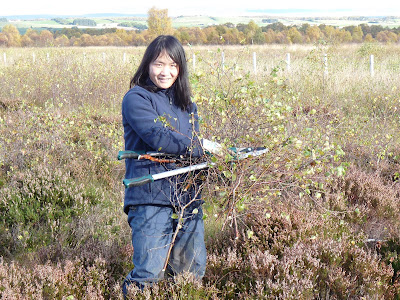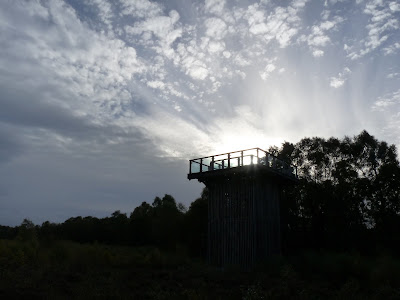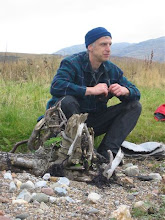





Well it is that time of year again, time to take part in the national hen harrier winter roost monitoring scheme as at Flanders we are lucky enough to have these fabulous birds wintering on the Moss....sometimes. This survey is done by picking a suitable vantage point to watch over Flanders from half an hour before sunset to half an hour afterwards and count any hen harriers coming onto the site to roost. Previously we used do this on the set Sunday coordinated nationally, once a month but with more demands on our time we have had to stop this Sunday evening activity and do it as close to the set day as part of our normal working week.
So yesterday evening Stephen and I found ourselves on top of the tower hunched in a bitterly cold wind straining our eyes across the Moss to catch a view of a hen harriers. The male birds stand out well being bright white and light grey with black tips to their wings but the female and young birds (called ringtails) are a mottled brown colour like a buzzard and it is only a bright white rump that makes them stand out against the tweedy bog landscape. But trying to spot a white rump a few inches square from a kilometre away is not easier. While we waited for a hen harrier to appear small parties of pinkies and Canada geese kept us entertained. A group of fieldfares freshly arrived from Iceland flittered across the Moss making no sound that would attract a predator looked for a suitable roosting spot in the birches. And the ubiquitous carrion crows kicked up a fuss along the woodland edge beyond the tower, probably just baiting the local buzzard doing a bit of late hunting. A late evening dog walker appeared on the boardwalk head down, iPod on concentrating on doing the circuit. But still no hen harrier. And then it was too dark to see even a a hen harrier landed on the tower so it was back to the car to put the heater on full blast and head for home.
This morning I was out onto the northern edge of the Moss at 0900 with a contractor and one of the first birds I saw was a ringtail being mobbed by some crows. Half an hour later and a gleaming male bird flounced across the Moss surface heading west. So there are actually hen harriers out there but Flanders is such a big site and they do move there roost sites about that maybe the next count we might have to abandon the tower and use a new viewpoint. With this in mind I think of my collegue John Halliday over in Argyll who can do his hen harrier counts from his vehicle, heater on, thermos flask to hand and I am reminded of just how difficult the logistics of doing anything on Flanders is.










































